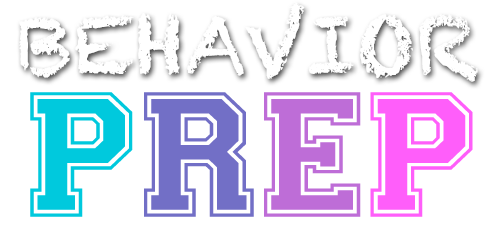F.5. Design and evaluate descriptive assessments.
Designing and evaluating descriptive assessments involves creating assessments that gather information about behavior in its natural environment without manipulating any variables. The behavior is observed and recorded as it occurs, providing insight into the antecedents, behaviors, and consequences (ABC) in real-life settings. Evaluating the assessment ensures the data collected accurately reflects the behavior and informs effective intervention strategies.
When conducting a descriptive assessment of problem behavior, a BCBA follows a systematic process to gather information about the behavior, its antecedents, and consequences. Here are the detailed steps involved in conducting a descriptive assessment:
Define the Problem Behavior
The BCBA starts by clearly defining the problem behavior in observable and measurable terms. This ensures consistency and clarity in data collection and analysis.
Collect Background Information
The BCBA gathers relevant background information about the individual, including their developmental history, medical conditions, communication abilities, environmental factors, and any previous assessments or interventions related to the problem behavior.
Observe and Document the Behavior
The BCBA conducts direct observations of the problem behavior in the natural environment or relevant settings. They document the occurrence of the behavior, its duration, intensity, frequency, and any notable characteristics. This provides a baseline measure of the behavior.
Identify Antecedents
The BCBA identifies the antecedent events or triggers that reliably precede the occurrence of the problem behavior. Antecedents may include specific events, situations, demands, or interactions that are associated with the behavior’s occurrence.
Document Environmental Factors
The BCBA considers the physical and social environment in which the behavior occurs. This includes documenting factors such as noise levels, lighting, presence of others, distractions, and any changes in the environment that might influence the behavior.
Observe Consequences
The BCBA observes and records the consequences that follow the problem behavior. This includes identifying any reinforcing events that may maintain or increase the behavior, as well as any events that may serve as punishment or decrease the behavior’s occurrence.
Analyze Data and Identify Patterns
The BCBA analyzes the data collected during observations, interviews, and document reviews. They look for patterns, trends, and correlations between the antecedents, behavior, and consequences. This analysis helps in identifying potential functions or maintaining factors of the problem behavior.
Develop a Hypothesis
Based on the gathered information and data analysis, the BCBA develops a hypothesis regarding the possible functions of the problem behavior. The hypothesis outlines the potential reasons why the behavior is occurring and the purpose it serves for the individual.
Share Findings and Develop Intervention Strategies
The BCBA communicates the findings of the descriptive assessment to relevant stakeholders, such as caregivers, teachers, and other professionals involved in the individual’s care. They collaborate to develop behavior intervention strategies based on the identified functions and maintaining factors of the problem behavior.
By following these steps, the BCBA gains a comprehensive understanding of the problem behavior, its context, and potential factors contributing to its occurrence. This information guides the development of effective behavior intervention plans that target the underlying functions and promote more adaptive and socially acceptable behaviors.
Example: A BCBA is called to address a child’s disruptive behavior in the classroom. The BCBA observes the child in the classroom over several days, recording what happens right before (antecedents), during (behavior), and immediately after (consequences) the disruptive episodes. The BCBA identifies a pattern where the child’s behavior occurs when difficult tasks are presented, and the behavior is followed by being sent out of the classroom (escape). After evaluating the data, the BCBA determines that the behavior is likely maintained by escape from difficult tasks and uses this information to design a function-based intervention.
